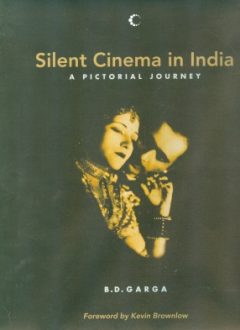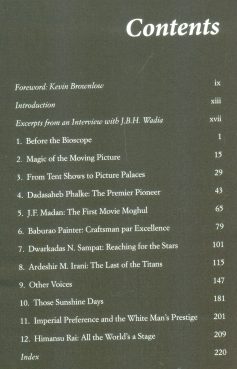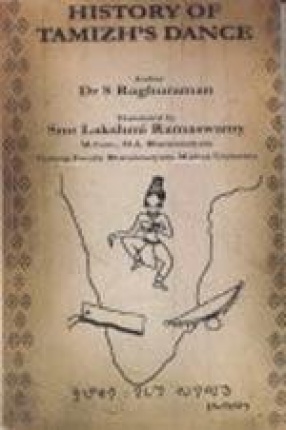The Moving Picture First Came to India a mere few months after the Lumiere brothers screened their first ‘films’ in Paris in December 1895. Writhin a decades, film-making had caught the imagination of artisis, photographers and busibnessmen the world over. Tragically, an overwhelming majority of those silent-era films are lost forever. In India, the situation is truly dismal. of the approximately 1,300 silent films produced between 1913 and 1931, barely 1 per cent have surcived, and not all of these in their entirety.
This extraordinary book documents a glorious phase of cinema in India ; the silent cinema era. Of the approximately 1,300 silent films produced between 1913 and 1931, barely one per cent have survived, and not all of these in their entirety. The book traces the stories of its earliest practitioners, who overcame many obstacles and pioneered several innovations to develop a cinema that often matched the standards of film-making in the West. B.D. Garga, arguably Indias finest film historian, paints a fascinating portrait of the era; and Himansu Rai, who gave Indian cinema an international presence back in the 1920s rhrought films like The Light of Asia and A Tbrow of Dice.
Illustrated with rare publicity brochures, stills, posters and other invaluable memorabilia, and including a perceptive foreword by renowned Oscar-winning film historian Kevin Brownlow, Silent Cinema in India: A Pictorial Journey brings alive the story of the birth of cinema in a country that is now the largest producer of films in the world.









There are no reviews yet.